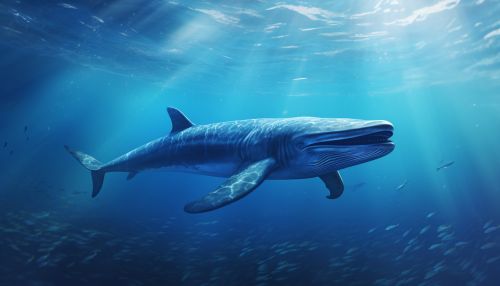Blue whale
Introduction
The Blue whale (Balaenoptera musculus) is a marine mammal belonging to the baleen whale suborder Mysticeti. Reaching a maximum confirmed length of 29.9 meters (98 feet) and weight of 199 tonnes (196 long tons; 219 short tons), it is the largest animal known to have ever existed.
Taxonomy and etymology
The blue whale is classified in the family Balaenopteridae, which includes the humpback whale, the fin whale, the Bryde's whale, the sei whale, and the minke whale. The family diverged from other cetaceans around 30 million years ago. The blue whale was first described by Carl Linnaeus in his landmark 1758 10th edition of Systema Naturae, where it was given the binomial name of Balaena musculus.


Description
Blue whales have long, slender mottled grayish-blue bodies, although they appear blue underwater. The mottling pattern is highly variable. The blowhole is large and positioned near the front of the head. The dorsal fin is small; its height averages about 28 centimeters (11 in), and it usually ranges from 20 cm (7.9 in) to 40 cm (16 in), though it can be as tall as 50 centimeters (20 in) or as small as 8 centimeters (3.1 in).
Distribution and habitat
Blue whales inhabit the open ocean, where they spend the summer in high-latitude feeding areas rich in krill, migrating to low-latitude breeding and calving areas in winter. They are found in all oceans except the Arctic, with the largest populations in the Antarctic.
Behavior and life history
Blue whales are solitary or live in small groups of two to three on average, although groups of up to 60 have been reported. They are not known to be territorial. They communicate using low-frequency sounds that can travel long distances under water.
Conservation status
The blue whale is listed as endangered under the Endangered Species Act and the IUCN Red List. The primary threats to blue whales are ship strikes and entanglement in fishing gear.
